If you use the Windows operating system, you must have seen the “Windows Modules Installer Worker” also denoted as the WMIW process in the Task Manager consuming significant amounts of CPU and/or the disk. This can make your system laggy since there is not enough space to run other critical OS tasks.
If so, you shouldn’t worry. At least not just yet. The Windows Modules Installer Worker is a legitimate Windows process with the corresponding file named “TiWorker.exe“. You need this process to keep your operating system up and running smoothly.
In this post, we will discuss what this process is, if you ought to disable it to conserve system resources, and how to fix the issue of the process consuming high system resources.
Table of Contents
What is Windows Modules Installer Worker Process?
The Windows Modules Installer Worker is responsible for detecting and installing Windows updates and other Microsoft product updates, like OneDrive, Office, etc. Before it installs the updates, it also backs up old data into a separate folder in case you want to revert to the previous version of the OS. If you recall, this is the “Windows.old” folder that you often find in the system boot drive.
Like it sounds, this is a major task – moving critical files and folders around and replacing them with more downloaded content from the internet. This task is bound to consume at least some system resources.
That said, high CPU/ disk consumption becomes a worry even after the updates are installed but the Windows Modules Installer Worker is still functioning at its maximum capacity, i.e. taking up high amounts of CPU and disk. In certain cases, it even takes up 100 percent of the CPU, leaving your system incapable of performing any other tasks at all.
Let us now see how you can mitigate the issue and bring your resource consumption back to normal.
Fix: Windows Modules Installer Worker High CPU Usage
As we mentioned earlier, the Windows Modules Installer Worker will normally take up high amounts of CPU and disk on your PC. However, it does not mean that it should take up the entire component all for itself. If it does, then that is something you ought to worry about, and then perform the following potential solutions.
Another reason to perform these tasks is when the Windows has been updated, but you still see the Windows Modules Installer Worker consuming high system resources in the Task Manager.
The solutions given below are given in chronological order, therefore we suggest that you perform them in the same order as well.
Restart Windows Update Service
Often, the Windows Modules Installer Worker can become glitchy, but this can be fixed by restarting a dependency service named the “Windows Update” service. Follow these steps to restart this service:
-
Paste the following cmdlet to stop the Windows Update service:
Net Stop wuauserv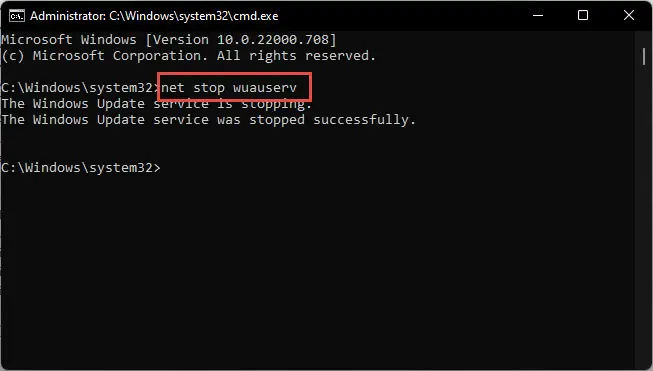
Stop Windows Update service -
Once the service stops, run the following cmdlet to restart the service:
Net Start wuauserv
Start Windows Update service
Once the service restarts, give the Windows Modules Installer Worker some time to install the update(s). If after some time it is still consuming significant amounts of CPU or disk, then we must try some other solutions.
Run Windows Update Troubleshooter
Thankfully, both Windows 10 and 11 come with built-in troubleshooters, including the Windows Update troubleshooter. This tool can scan and potentially fix any detected issues with Windows Update, which in turn will fix the issue of Windows Modules Installer Worker’s high resource consumption.
Perform the following steps to run the Windows Update troubleshooter:
In Windows 11
-
Navigate to the following:
Settings app >> System >> Troubleshoot >> Other troubleshooters
-
Here, click Run in front of “Windows Update.”
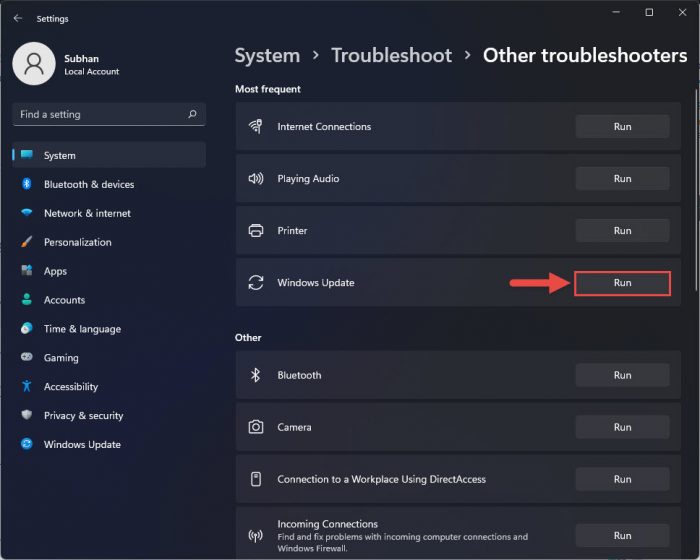
Run Windows Update troubleshooter -
The troubleshooter will now run and scan for any anomalies. If any are found, it will attempt to fix them, as in the image below. You can then close the troubleshooter.
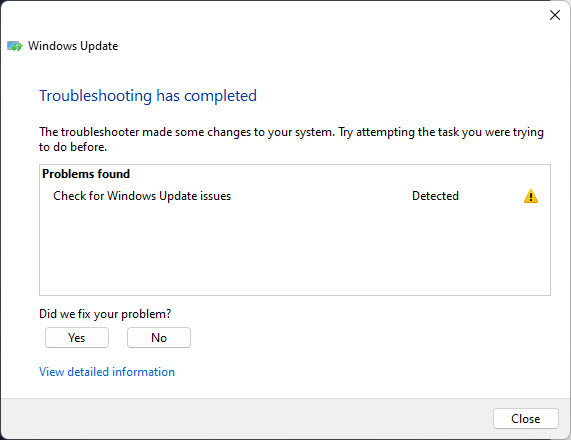
Attempted to fix any issues
In Windows 10
-
Navigate to the following:
Settings app >> Update & security >> Troubleshoot >> Additonal troubleshooters
-
Here, click Windows Update, and then click Run the troubleshooter under it.

Run troubleshooter -
The troubleshooter will now run and scan for any anomalies. If any are found, it will attempt to fix them. In certain cases, no issues are detected. Either way, you can then close the troubleshooter.

Close troubleshooter
If any changes are made by the troubleshooter, you should now recheck if Windows Modules Installer Worker is still functioning whilst taking up significant amounts of system resources. If it is, then we must try a more aggressive approach to fix the problem.
Clear Software Distribution Folder
The Software Distribution folder can be found in C:\Windows. This folder contains temporary files within a sub-folder (download) that are required to install a Windows update. Quite often, a Windows update fails to install and experiences an error code because of these corrupted files.
This can be a reason for the Windows Modules Installer Worker to become glitchy.
In this case, these temporary files need to be removed, and the update process needs to be started from the top, where any prior downloaded files are re-downloaded.
Follow these steps to clear the folder:
-
Navigate to the following location using File Explorer:
C:\Windows\SoftwareDistribution\Download
-
Now, select all the items by using the Ctrl + A shortcut keys. Then delete all selected items using the Del key while holding down on the Shift key to remove them permanently.
-
If asked for a confirmation, click Yes.

Give confirmation -
You will now be asked to provide elevated privileges. Check the box next to “Do this for all current items” and then click Continue.
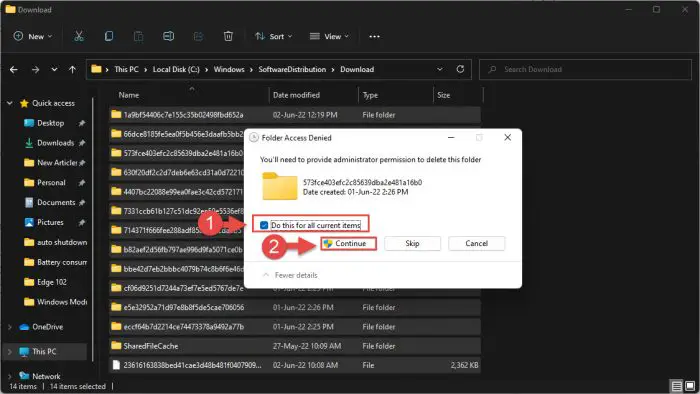
Provide elevated privileges -
Once all items are removed, restart your PC.
Once it reboots, it is likely that the Windows Modules Installer Worker process is still running, since it is now reattempting to download the update files. Give it ample time and check to see if it is still consuming significant system resources even after 1 hour. If it is, then we are afraid that the issue persists.
Repair Operating System with DISM and SFC Tools
If the issue still hasn’t gone away, there are likely corrupted files on your system. In that case, you can attempt to repair them using the built-in DISM and SFC tools.
Perform the following steps to attempt and repair any corrupted/missing system files:
-
Now run the following cmdlets one after the other to scan and repair critical system files:
DISM.exe /Online /Cleanup-image /Checkhealth DISM.exe /Online /Cleanup-image /Scanhealth DISM.exe /Online /Cleanup-image /Restorehealth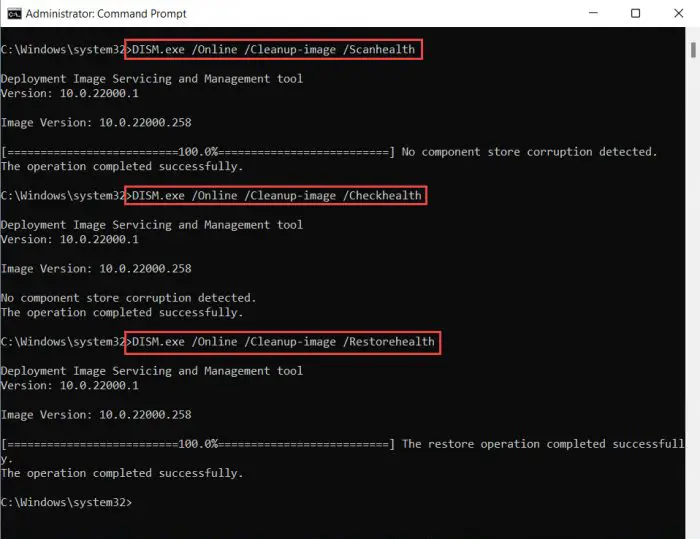
DISM health check -
Now run the SFC scan using the following cmdlet. The SFC command can take a few minutes to fully scan your PC and perform any repairs in case of any anomalies. We suggest that you allow ample time for the tool to perform its task:
sfc /scannow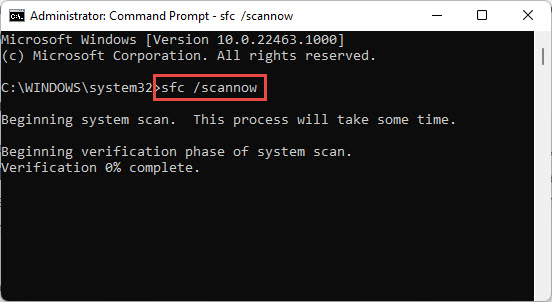
SFC scan -
Once the scan completes, restart your PC.
When the computer reboots, recheck if the Windows Modules Installer Worker is still consuming large amounts of the CPU and the disk.
All the possible solutions should work and fix the issue of high CPU consumption by Windows Modules Installer Worker (TiWorker.exe).
Is Windows Modules Installer Worker a Virus?
By now, you should have understood that the Windows Modules Installer Worker is a legitimate Windows process responsible for downloading and installing Windows updates as well as other Microsoft product updates. Therefore, it can be concluded that the process itself is not a virus.
However, hackers often conceal viruses with the names of legitimate Windows processes so that they can hide the process in plain sight.
Is it Safe to Disable Windows Modules Installer?
The answer is both yes and no. Technically, it is safe to disable the Windows Modules Installer service, which in turn will disable Windows Modules Installer Worker, freeing up your system resources. However, this will prevent your operating system from being updated in the future, stealing you of the critical system updates required to protect your PC.
In the long run, the answer is no. It is not safe to disable the Windows Modules Installer service, and we do not suggest that you do so.
Closing Thoughts
The Windows Modules Installer Worker is the name of the process that you see in the Task Manager. However, the name of the file running the process is called “TiWorker.exe.” This file can occasionally, but rarely, become corrupted, causing the Windows Modules Installer Worker to behave abnormally and consume more system resources than usual.
In a similar scenario, you can attempt to fix the issue using the given guide above and mitigate the issue without having to completely redo your OS.
